The Principles of Playful Inquiry
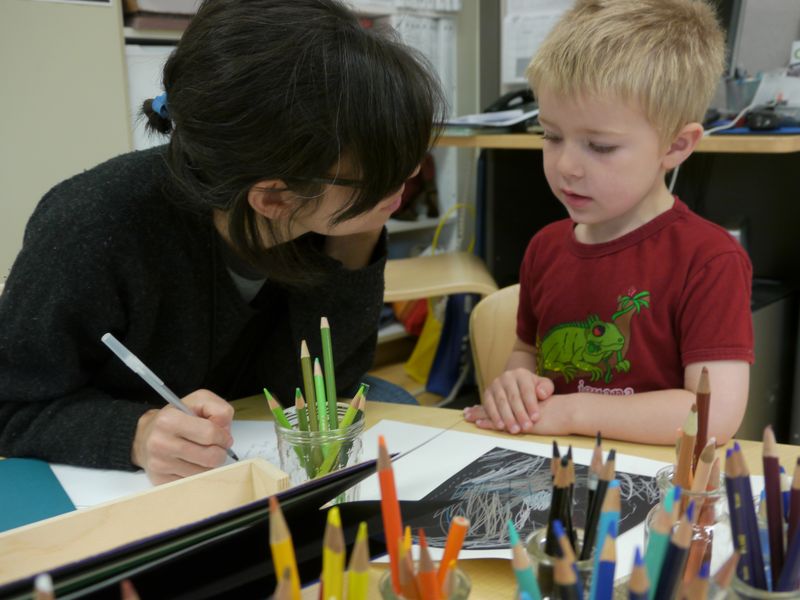
Adapted from What About Play? The Value of Investing in Child’s Play by Susan Harris MacKay, 2010

What is the role of adults in playful inquiry?
Our
research practices at Opal School and at Portland Children’s Museum have
offered us the opportunity to observe, interpret and reflect on countless
interactions between children and the adults who are their caregivers. On any
given day, we see children and grandparents, parents, caregivers and extended families.
We see our own volunteers and play-guides interacting with children who visit
our museum exhibits and studios. We see children and their teachers in our
preschool through fifth grade classrooms. From this vantage point and within
the context of current research from the fields of the neurosciences,
developmental psychology and education, we’ve developed some ideas intended to
support adults in their desire to be productive and inspiring companions to the
children in their care.
We have found the following ideas
help to guide adult interactions with children in playful inquiry.
Adults can…Inspire Curiosity
We have found that when adults pay attention to the
interests of children, children get serious about learning. The more they
expect to be listened to, the more curious they become about their experiences.
Children come into the world wired to try and make sense of it. When we pay
attention to the things that children seem to wonder about, learning becomes
joyful and a sense of wonder is established and sustained.
We encourage adults to listen to children and
ponder questions together that neither of them knows the answers to. As noted Stanford professor Elliott
Eisner reminds us, “Unanswerable
questions should be a source of comfort. They ensure that you will always have
something to think about! But why do puzzlements provide satisfaction? Because
they invite the most precious of human abilities to take wing. I speak of
imagination, the neglected stepchild of American education.”
A curious mind is an alert mind, and one that is
primed for learning. Alertness,
focus and attention are the keys to developing strong pathways in the brain
because the physiological process of developing those pathways relies on them
(Merzenich, 2008; Neville, 2008).
Children attend to meaning because it motivates and engages them. They
benefit tremendously from the company of a curious, attentive adult who is
willing to share his or her own meaning making process authentically and
generously.
Adults have the opportunity to create
environments that are as rich in possibilities for curiosity and discovery as
an old growth forest or a beach at low tide. Classroom environments
should encourage children to become lost in their play, and adults to let them.
Adults can remember to … Explore Playfully .
Playfulness is an attitude of freedom, joy,
possibility, and imagination. It
is a quality of genius (Armstrong, 1998).
An essential aptitude (Pink, 2005). In play, we have the opportunity to
reinvent the world we find around us.
Adults can offer children the opportunity to explore art, nature,
mathematics, literature, geography, technology or anything else they want
children to learn—and they can do it with
a playful attitude.
During play, focus is often so intense that all
sense of time is lost. A mind that has been playfully and freely associating is
“primed to tackle new ideas” (Paley, 2005).
In playful inquiry, the idea isn’t so much to avoid
or distract ourselves from reality as it is to find a personal way to interpret
and make meaning of it. In play
our minds have the best opportunity to make meaning and connections because we
are free from the consequence of mistakes and the fear of being wrong. The pleasurable emotions associated
with play relax our neural pathways and free them up for layered and
multi-dimensional growth.
Adults encourage children to explore playfully when
environments are thoughtfully prepared with playful inquiry in mind. But
opportunities increase when adults approach their own work from a stance of
playful exploration themselves. Adults can observe children with these
questions in mind:
- What
environments, experiences or materials elicit the greatest delight? - What
environments, experiences or materials sustain children’s interests and play
for the longest periods of time? - What questions
do children seem to be asking within the environment? - What
environments or experiences tend to invite the most collaboration between
children?
Based on these observations, how can we create new
possibilities for joy, wonder and inspiration?
Adults can support children
to … Seek Connections.
A
connection feels like a hole in your heart that has just been filled.―Olive, age 8
We have come to believe that the quality of our
learning is determined by the quality of our relationships– our ability to
have them with others, and our ability to perceive them in our world. Without question, children benefit from
the support of a caring adult who is willing to enter into a genuine
relationship. Respect, trust and
love lay the foundation for the emotional state most conducive for the learning
brain. But equally important, is
the support we give to children for seeing
relationships, patterns, and connections in the world. Definitions of creativity are hard to pin
down, but all have a similar theme:
crossing boundaries, seeing relationships other people haven’t noticed,
and the ability to make novel connections between old familiar parts (Pink,
2005; Rinaldi, 2005; Robinson, 2001).
Playful inquiry thrives in an environment rich with possibilities for
the arts, sciences, and language.
Creative
work is play… The creative mind plays with the object it loves. Artists play
with color and space. Musicians play with sound and silence. Children play with
everything they can get their hands on.
There are many opportunities to support and
encourage connections between children, teachers, families, materials, the natural world and ideas.
Connections are the building blocks that strengthen creativity and are one of
the most powerful learning tools supported by playful inquiry. Adults invite
children to discover connections and relationships when environments support
children to slow down and get lost in their play. Important connections range
from concrete and hands-on work with materials, to abstract ideas conveyed
through themes and activities. Children may make connections with clay, blocks,
or by manipulating a water flow. They make connections when they engage in
spontaneous and improvisational theater in a dramatic play area. They make
connections when they consider the many shades of green they can make with
watercolor paint after spending time observing the ferns in the forest. They
make connections when they experience big ideas between books and songs.
Connections help create complex wiring in our brains.
In order to support children’s innate drive to
connect, see and create relationships, adults can provide a child with loose
parts (for example, blocks, found objects, natural materials), art materials
and time to tinker. They can appreciate
and encourage the use of metaphor.
And adults can talk with children about what they see. They can marvel
over and celebrate novel ideas, and delight in children’s tremendous capacity
to create them.
Adults can encourage
children to … Share Stories.
Stories are how we remember, how we think, how we
communicate, how we understand. In
his book, The Literary Mind, cognitive
scientist Mark Turner writes, “Story is the fundamental instrument of thought.”
(in Pink, 2005, p. 101)
Opportunities for playful inquiry are enhanced within environments that
contain abundant invitations for story making and story sharing. Stories are how we take the parts of
our lives and make a meaningful whole.
Over time, in our memories, the story of our life
becomes our life. Playful inquiry
opens the door for that story to be defined by success and contentment. In
2002, psychologist Jerome Bruner told an audience in Reggio Emilia, Italy, that
children learn the syntax of language in order to tell stories. It is important that we listen to them.
It is equally important that adults tell children
their own stories. Adults can put
children on their laps and transport them through time and space with those
found in books. And when children
grow too big adults can sit side by side, eye to eye, arm in arm – and keep the
reading and telling of stories alive in a child’s world.
Remember this one thing, said Badger. The
stories people tell have a way of taking care of them. If stories come to you,
care for them. And learn to give them away where they are needed. Sometimes a
person needs a story more than food to stay alive. That is why we put these
stories in each other’s memories. This is how people care for themselves.―Barry
Lopez, Crow and Weasel (1998)
Open-ended environments such as dramatic play and
block spaces, forts or other shelters, or child-sized versions of familiar
places like grocery stores or doctors’ offices, naturally lend themselves to
rich storytelling and imagining.
Adults also have the opportunity to tell the
stories of their own experience through the documentation of playful inquiry.
By taking the time to photograph and narrate stories of experiences and
observations, adults can make visible their professional interpretations of the
importance of those experiences. Quotes, photographs and narrative accounts
have the effect of slowing down an event so that it is easier to appreciate.
Moments of playful inquiry are filled with treasures to last a lifetime.
Documentation offers adults a tool to stop motion, to shine a light on those
treasures and to let them sparkle. When carefully displayed, these stories and
photographs allow adults a concrete connection to the importance of play for
the children they care for. As
Badger advises us to do—we can put these stories in each other’s memories. They
will help us take care of ourselves.
Adults can … Nurture Empathy.
Empathy is that incredible human capacity to
imagine ourselves standing in someone else’s shoes. Empathy is what allows us to connect with other human beings
and to experience the meaning and joy in knowing we are not alone. Empathy is what allows us to live by
the golden rule. When we are
empathetic to another’s experience, it is impossible to do what we would not
have done to ourselves. The challenge to imagine other perspectives, to seek
connection between our own stories and those of people whose experiences are
very different from our own, is at the very heart of genuine inquiry and one of
its most powerful uses. In her
2008 Harvard commencement address, the author of the Harry Potter series, JK
Rowling, spoke of the power of empathy:
Unlike any other creature on this planet,
humans can learn and understand, without having experienced. They can think
themselves into other people’s minds, imagine themselves into other people’s
places.… many prefer not to exercise their
imaginations at all. They choose to remain comfortably within the bounds of
their own experience, never troubling to wonder how it would feel to have been
born other than they are. They can refuse to hear screams or to peer inside
cages; they can close their minds and hearts to any suffering that does not
touch them personally; they can refuse to know.I might be tempted to envy people who can live
that way, except that I do not think they have any fewer nightmares than I do.
… I think the willfully unimaginative see more monsters. They are often more
afraid.What is more, those who choose not to empathize
may enable real monsters. For without ever committing an act of outright evil
ourselves, we collude with it, through our own apathy.
We enable healthy
relationships when we support and encourage children’s social play and
collaborative work. Adults can
make emotions visible by naming them and being curious about the behaviors
associated with them. We can try to ask questions before we jump to
conclusions. It makes sense to invest
in a child’s social and emotional intelligence as an integral and vital part of
creativity, intellect, and healthy development. Adults model caring by
listening to children, and asking questions about the interpretations he or she
makes of experiences. Adults can
talk with children about the things they care about and let children see what
it looks like to take action on behalf of those things. Adults provide critical support for
children to build awareness of unfairness in this world and for helping a child
learn to cope with and respond to it appropriately.
No human
being can achieve his full potential if his creativity is stunted in
childhood. And no nation can
thrive in the 21st century without a highly creative and innovative
workforce. Nor will democracy
survive without citizens who can form their own independent thoughts and act on
them.
If
the guiding principles for supporting and promoting playful inquiry seem pretty
simple, and maybe even a little old-fashioned, it’s because they are. As it turns out, these simple
things—telling stories, connecting with one another, being curious about the
world, seeking meaning, and even being good to one another (Goleman, 2006), are
hard-wired into our species. In
other words, we’re not broken—but
some of our current systems most certainly are. In our efforts to organize, industrialize, strategize,
standardize—we’ve lost our way, and we’ve obscured the creative birthright of
many who’ve happened along. Placing a value on our natural learning strategies
in our communities and our institutions will help shift our culture towards a
sustainable future.
To
be responsive to a child’s innate sense of wonder is to help choreograph a
life-long dance with the world that we experience and create as we live out our
lives. Environments steeped in playful inquiry support children to grow into
adults who have an understanding of their own capacities—who’s minds have
richly developed pathways layered with possibilities for new and flexible
connections. These are minds that
can solve complex problems, invent novel solutions, imagine another’s
perspective, and communicate with confidence and competence. These are the kinds of minds that
create peaceful, sustainable, and happy communities.
For
those who would be neuroscientists, a love of mathematics and technology (and
time to play) might lead to the kinds of studies that are beginning to connect
the relationships between the use of the arts and general cognition. Such scientists are finding that the
study of music and drama support strong neural strategies for long-term memory
(Jonides, 2008). Others have found
connections between the study of music and the development of attention
(Neville, 2008). Still others have
found that genetic pre-dispositions to certain art forms lead to high interest
and competence in those art forms (Posner, 2008). In other words, it turns out that Nachmanovitch was
right: the creative mind plays
with the object it loves (1990).
For
those who would be educators, a love of learning (and time to play) might lead
to the kind of recognition that Stanford professor, Elliot Eisner (2002), makes
visible when he writes:
The aim of education ought
to be conceived as the preparation of artists…individuals who have developed
the ideas, the sensibilities, the skills and the imagination to create work
that is well proportioned, skillfully executed, and imaginative, regardless of
the domain in which an individual works.
The highest accolade we can confer upon someone is to say that he or she
is an artist whether as a carpenter or a surgeon, a cook or an engineer, a
physicist, or a teacher. The fine
arts have no monopoly on the artistic.
For
those who would be poets, a love of words (and time to play) might lead to the
kind of questions Mary Oliver posed in her poem, The Summer Day:
Tell me, what else should I
have done?
Doesn’t everything die at
last, and too soon?
Tell me, what is it you
plan to do
with your one wild and
precious life?
Or
the advice that 10-year-old Byron offers in his poem:
Curiosity Killer
Curiosity should not be
killed.
It’s made to ponder, to
explore.
Get to a place
Where your mind can wander.
Ponder the unpondered
Questions.
Both
poets invite us into a playful inquiry that inspires us to muse on our
opportunities and our choices.
What are we willing to imagine?
To wonder? To dream?
Playful
inquiry is the means to tapping into a child’s energy, and unblocking every
child’s capacity for expression. When learning environments promote playful
inquiry, our communities will benefit from the voices of children now, and
launch into the future citizens that have the creativity, the curiosity, and
the care to live happy, healthy lives with one another.
What resonates for you in this post? How does it relate to your work? What questions does it leave you with?

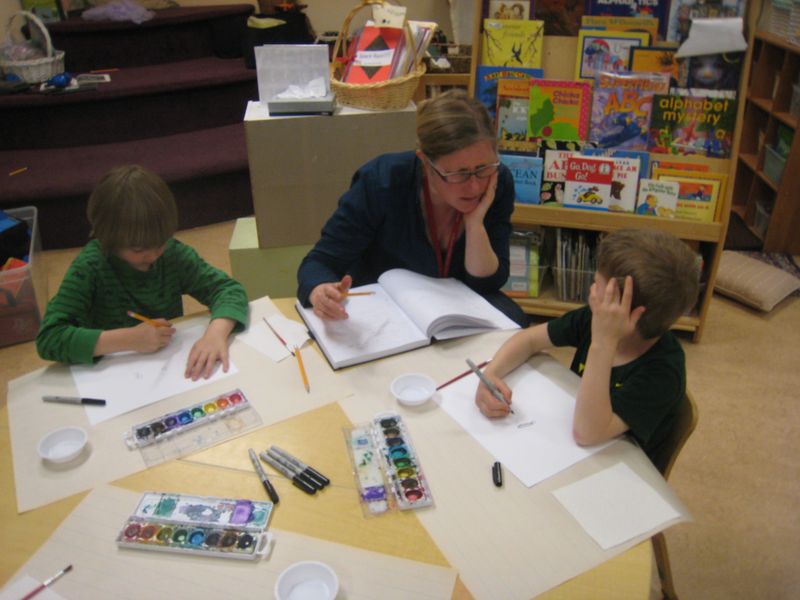
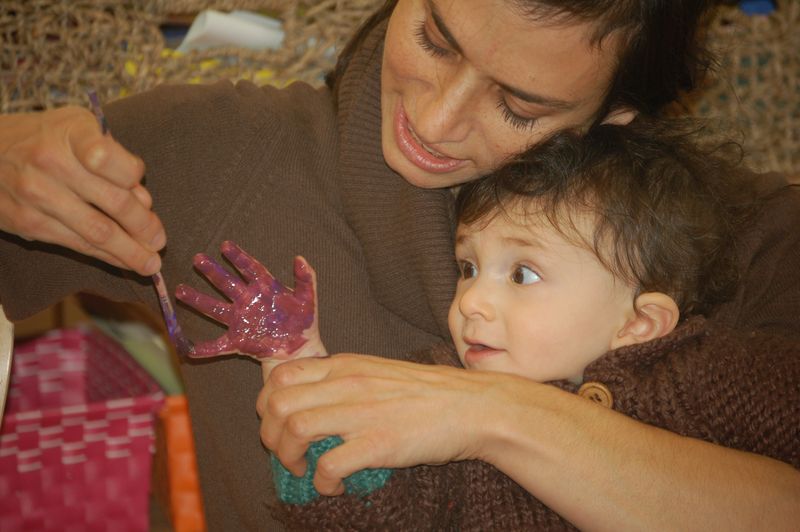
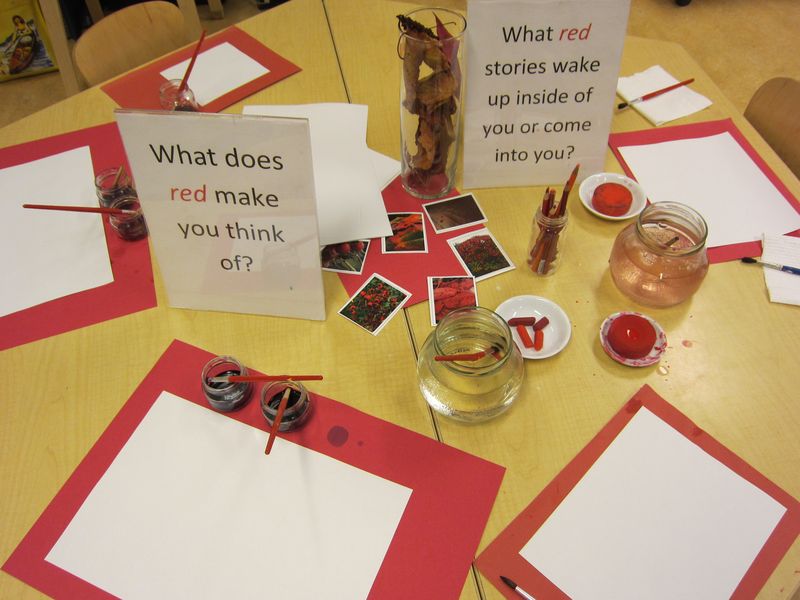
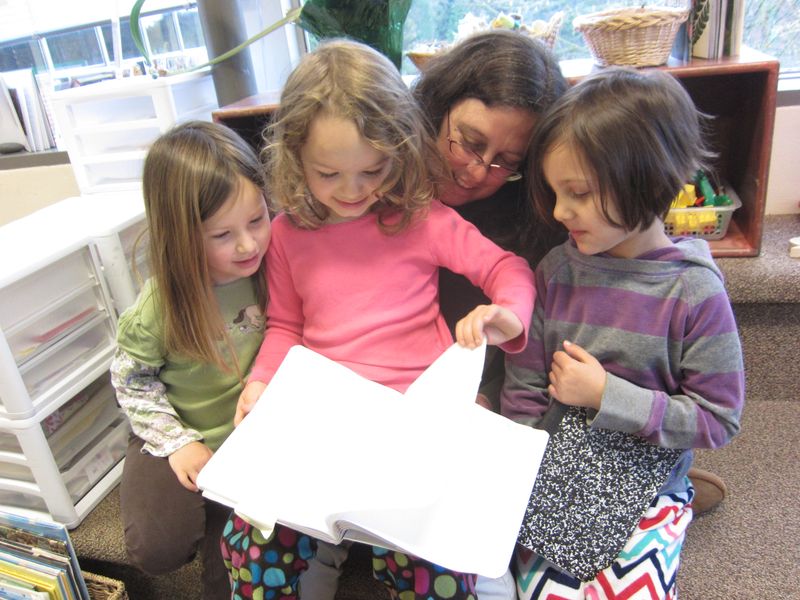

Since coming to Opal school I have been so encouraged to PLAY with my kids. To play with their ideas and allow my thinking to be swept up into their awe and wonder about the world. Today we spent the morning in Pioneer Square just playing. In playing with each other and the space they began a relationship with our city that we can explore all year long. How many times could we return to that space? What might their questions be. What will they feel there? How does it feel to wind up and let fly…for a moment between the big stacks of bricks? What is that feeling that happens when you step into the center of the echo chamber and your voice completely changes? Is it supprise, fascination, joy? I am so excited to keep playing with my students and encouraged by this article that one of my roles is just to explore playfully with them. How will I begin to see the city differently? How will all of our learning be deeper and richer because we have together found joy?
I forgot ot mention that I am also a teacher at Opal school, working with students in the Opal 3 classroom (8-10 year olds).
I am from The American School in London and agree that it can be daunting to find the space to be with each and every child in the class but it is definitely something to aim for and Rob, you are so right about the few minutes making a difference. Sometimes we can become so concerned about “getting it right” that we overlook the simple, more do-able solutions. Zalika, I look forward to hearing more about your exploration of the children’s relationship with the city !
I agree with both Rob and Melanie – it can feel overwhelming to think about the task of connecting with each and every child each and every day. I think this is because what it looks like, in an ideal world, is a room full of children who are constantly and deeply engaged in their play, and the teacher spending a few moments with each child as they move around the room. There are moments like this, but not always. Like Rob said, it takes “sitting down with one child, for a few minutes, over several days, to allow that child to feel different about themselves and their own place in the class”.
If we frame our role as adults in a classroom as one of fostering an environment of “telling stories, connecting with one another, being curious about the world, seeking meaning, and even being good to one another”, I think we’ve put ourselves in a very positive position.
And Zalika, what a wonderful experience, and one that is so different from what we think of as a “field trip” – just experiencing a space is a learning experience!
The importance of the adult walking alongside the child, learning together, building relationships together, and encouraging each other has a significant role in playful inquiry. Through interactions and connections with each child, the teacher inspires curiosity, and encourages playfulness. I agree with the above statements in the importance of spending time with each individual student. Taking the time to connect with each child allows them to see their self-value, shows them respect, and encourages them to share their ideas, because they are important. Sharing stories is one way to connect on a level with children that they (and we, adults) will never forget. Listening to the children is so essential to developing a trusting, loving, respecting atmosphere in any environment.
I am spending my afternoon catching up on all the articles, this one connects so perfectly with our work here in Brussels at Turtlewings. I also love that I read the 5th comment here and felt compelled to respond to my connection with it and then realized it was written by Allie, whom I know already! It is all about connecting.
Anyway, what I want to say is this! Our center is focused on creating the environments where children (and adults) are naturally drawn to certain spaces because of that individuals innate creative capacity(ies). I do agree that in the majority of classrooms around the world the task of connecting with each child and fostering their individual theories and explorations is daunting. But, like Allie said it is really more about setting up the environment to do this, no matter what age of the child.(or even adult) Setting up spaces that foster nature, movement, social, etc. abilities, questions and explorations allows that person to engage and investigate on their own. Then your job, still challenging I must say, is to be the floater around the room, listening and dropping words, questions and other materials into the mix in order to provoke the playful inquiry to reach new levels and connections. (The Environment as a teacher) Haven’t you always wanted an(nother) teacher in the room? Now you can…
“Adults have the opportunity to create environments that are as rich in possibilities for curiosity and discovery as an old growth forest or a beach at low tide. Classroom environments should encourage children to become lost in their play, and adults to let them.” I was so struck by this quote, more so than any I’ve come across so far in considering environments for and with children. I brought it yesterday to inspire a new team of toddler educators as they reconsidered their classroom (as in, read the story it tells, tore it apart, and reorganized!) It was beautiful! I’m so grateful I had the gift of the “old growth forest” to offer them in their process.
I came across this sentence, “We have the opportunity to reinvent the world we find around us.” I found this to be incredibly inspiring. It is an amazing thing to be able to work with a child, to be the person to inspire imagination, learning, and fearlessness in learning. All children should be provided with supportive learning environments and attentive adults throughout all their education. Then everyone can help create a community, a world, we want to live in.
I feel so strongly about the quote from Miller and Almon. “No human being can achieve his full potential if his creativity is stunted in childhood. And no nation can thrive in the 21st century without a highly creative and innovative workforce. Nor will democracy survive without citizens who can form their own independent thoughts and act on them.” Working on the campus of a polytechnic university I see and read about innovative student projects everyday that are a result of student playfully inquiring with materials that they love. At the same time, I see schools that still focus time and energy on passing a standardized test; getting all the bubbles filled in correctly. When will we, as a nation, begin to say enough! to the idea that success can only be tied to test scores and grades? It wasn’t a standardized test that put humans on the moon and it wasn’t a standardized test that painted the Monalisa!